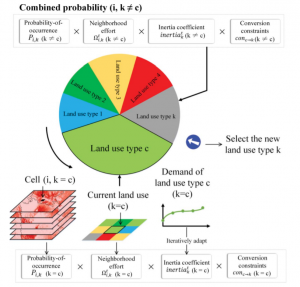Abstract
Global land-use and land-cover change (LUCC) data are crucial for modeling a wide range of environmental conditions. So far, access to high-resolution LUCC products at a global scale for public use is difficult because of data and technical issues. This article presents a Future Land-Use Simulation (FLUS) system to simulate global LUCC in relation to human-environment interactions, which is built and verified by using remote sensing data. IMAGE has been widely used in environmental studies despite its relatively coarse spatial resolution of 30 arc-min, which is about 55 km at the equator. Recently, an improved model has been developed to simulate global LUCC with a 5-min resolution (about 10 km at the equator). We found that even the 10-km resolution, however, still produced major distortions in land-use patterns, leading urban land areas to be underestimated by 19.77 percent at the global scale and global land change relating to urban growth to be underestimated by 60 to 97 percent, compared with the 1-km resolution model proposed through this article. These distortions occurred because a large percentage of small areas of urban land was merged into other landuse classes. During land-use change simulation, a majority of small urban clusters were also lost using the IMAGE product. Responding to these deficiencies, the 1-km FLUS product developed in this study is able to provide the spatial detail necessary to identify spatial heterogeneous land-use patterns at a global scale. We argue that this new global land-use product has strong potential in radically reducing uncertainty in global environmental modeling. Key Words: cellular automaton, FLUS, global land use change, IMAGE, 1-km resolution.

Q.E.D.









